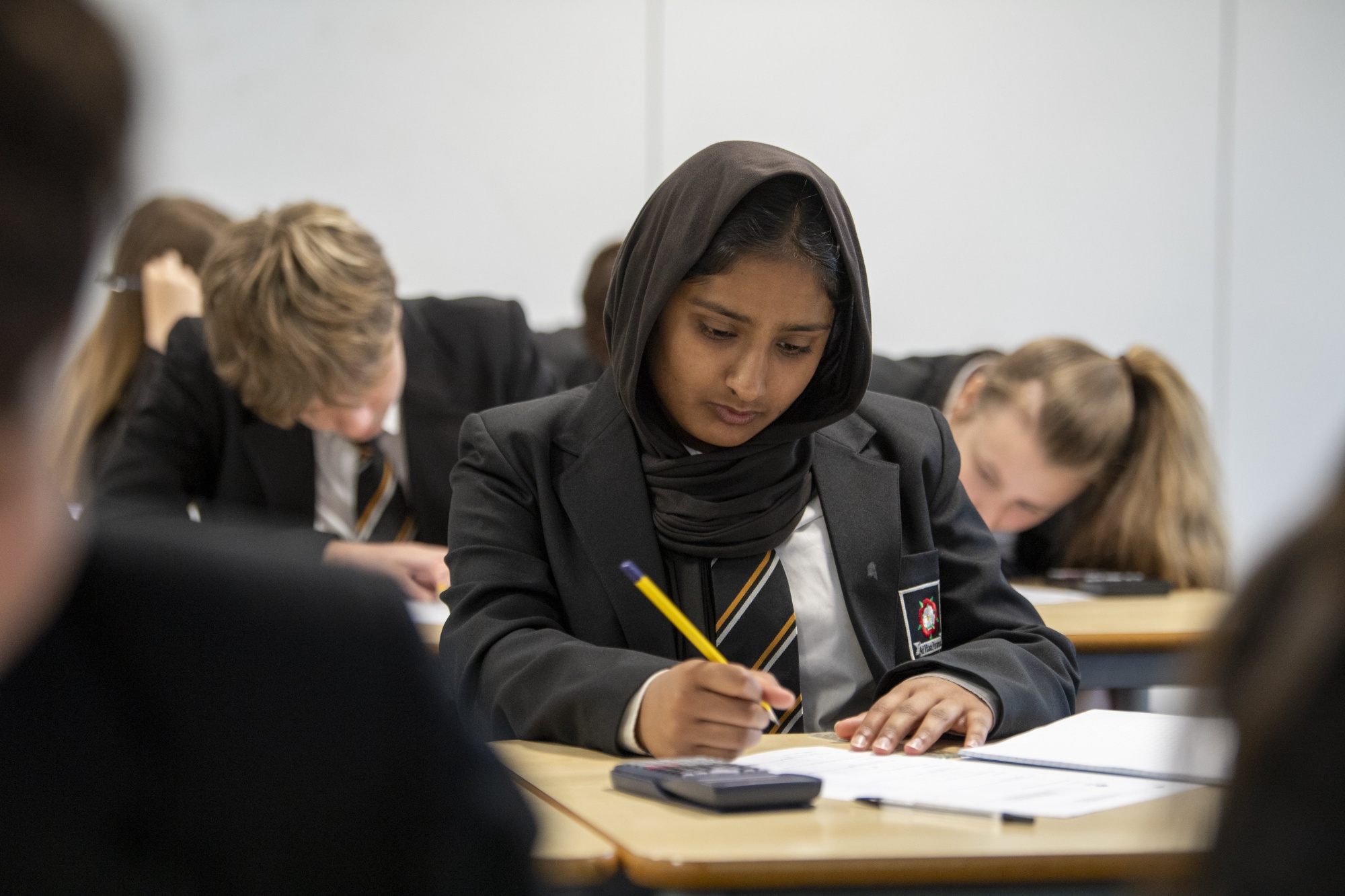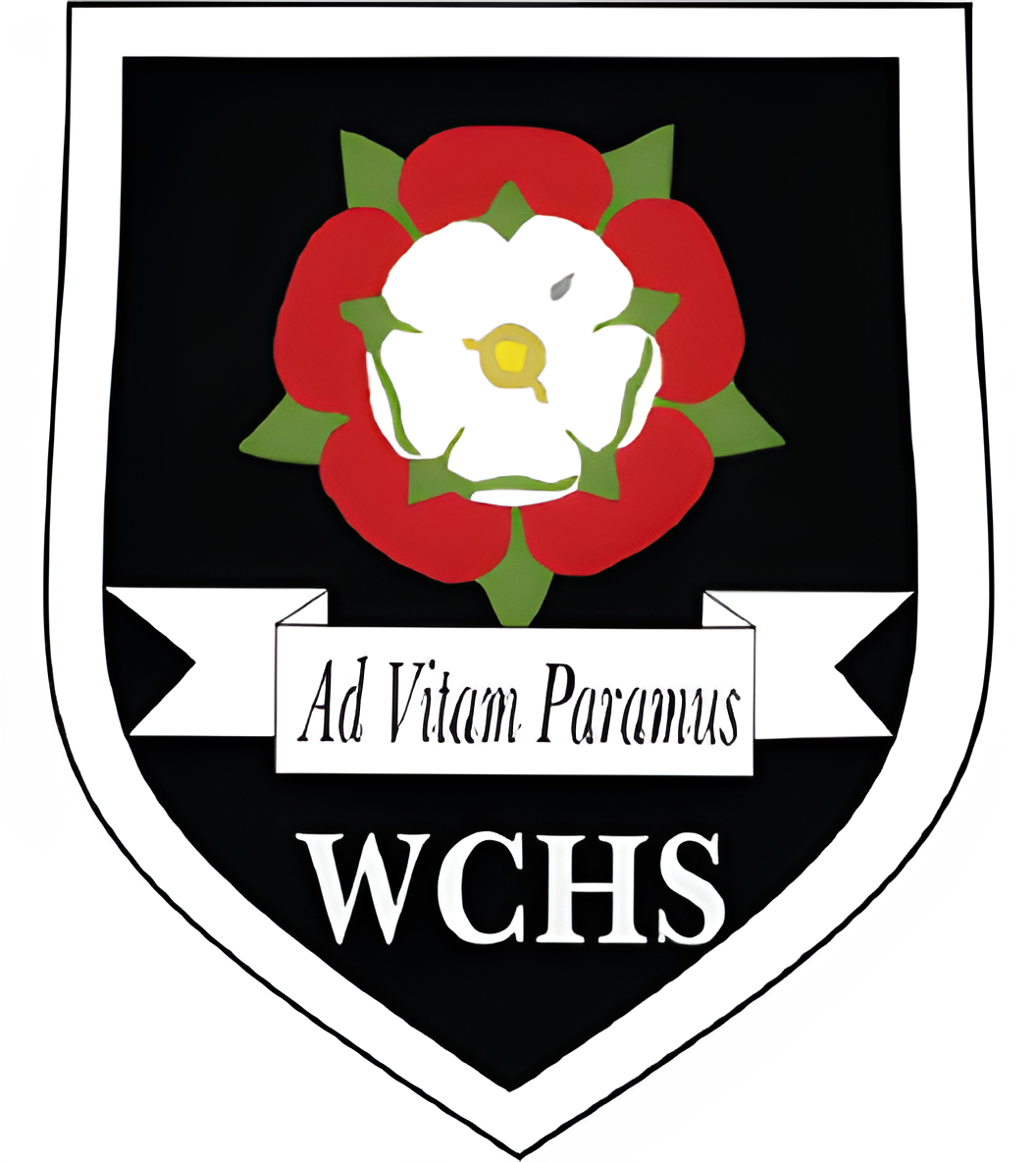Mathematics

Through the five years, students study maths at West Craven we aim to instil in students the confidence and capability to tackle complex problems, building their skill sets so they can apply their knowledge to any context.
Through our curriculum we will help students to realise that mathematics is:
- essential to everyday life
- critical to science, technology and engineering;
- necessary for financial literacy
- important in most forms of employment
As our students progress, we aim to ensure that they can reason mathematically, develop fluency in numeracy, apply their knowledge to increasingly complex problems and have the resilience to learn from their mistakes.
Through our pedagogy and the drive to ‘know more and remember more’ we will use the curriculum to
- improve student knowledge
- use mathematical language to deepen understanding
- enhance cultural capital
- reduce the knowledge deficit
- develop the use of metacognitive theory
- accelerate the progress of underachieving groups students
Through our assessment we will use the information to:
- know students as individuals
- adapt curriculum sequencing
- address knowledge deficits
- empower students to personalise their own learning
Year 7 overview
Students begin Year 7 developing algebraic thinking, looking at sequences and algebraic notation, then consolidating knowledge of the equality sign. This gives students a good grounding in algebraic thinking and ensures that students can apply this knowledge into their next unit. Algebra is limited within Year 6 so this provides a good “leveller” for students coming up from primary school; and allows for mixed ability teaching in Year 7. Next students look at place value and make links to proportion: place value is covered in a lot of depth at KS1/2 level, so this consolidates this knowledge and looks at proportion which makes up a significant amount
In term 2 students consolidate their knowledge of the four main mathematical operations and use these in a variety of contexts. This links to some of the measures of average and looks at pupils working confidently with decimals and integers in all contexts. Students will have knowledge of mental methods already from primary school; but this provides pupils with the opportunity to work on embedding these skills and securing their knowledge of fundamental mathematical facts and skills (Eg. Number bonds). Students also work on expanding their fractions knowledge: looking at finding fractions of amounts and adding and subtracting fractions. Students will be secure working with unit fractions at the lowest levels and move all the way up to mixed numbers for those students aiming for a higher level. The foundations will also be laid for working with directed number: this key topic is given lots of time within this scheme of work to ensure that students are confident working with directed number moving forward in their mathematical careers.
Term 3 begins to look at geometry: time is given to using mathematical equipment accurately and appropriately (compass and protractors). Students will look at drawing bisectors of both lines and angles and will learn how to measure angles and find missing angles using angle facts. The final half term is looking at embedding mathematical skills and reasoning skills taught throughout the year. Pupils are exposed to probability for the first time and look at using correct set notation. At this point proof is introduced and pupils are encouraged to reason mathematically and develop their abilities to work with all kinds of mathematical problems.
Throughout the year block tests are used formatively to ensure that pupils are secure in their knowledge, these block tests are also spaced out to ensure students are recalling knowledge from a few weeks prior to embed into long term memory. Retrieval starters are used to ensure students are securing their knowledge throughout the year and the White Rose Termly assessments are used to see how students are progressing. Data from these assessments is inputted to Pinpoint to allow staff to use this data to fill gaps.
Year 8 overview
Year 8 start the year working on their proportional reasoning skills, using ratio and linking this to real life context including scale drawings. Pupils will then develop their knowledge of fractions by looking at multiplying and dividing fractions, this links to the fractions work seen in Year 7 but takes things further and ensuring that multiplying and dividing fractions are kept separate to adding and subtracting to limit misconceptions arising. Students will then look at further geometry work with the Cartesian plane, students have not seen graphs in Year 7 so this is new knowledge and begins the work on straight line graphs which is an important unit in Year 9. Students will also explore representing data, some of which is seen in Year 7 but this knowledge is embedded in this unit.
In Term 2 students build on their algebraic knowledge which is introduced in Year 7: while Year 7 focuses on algebraic representation this unit focuses on techniques and ensures pupils can expand and factorise brackets and form and solve both equations and inequalities. This knowledge is embedded further by looking at sequences and indices. In half term 4 students formalise their knowledge of fractions and link this to percentages: seen briefly in Year 7 but not in significantly depth. The links between fractions and percentages are made explicit in this unit. Pupils apply their knowledge of indices to writing numbers in standard form and summarise in a unit that looks at number sense, with particular focus on real life Maths and cultural capital elements.
Pupils look further at geometry in Year 8, linking together their knowledge of angles seen in Year 7 to angles in parallel lines. Students will also learn how to find missing exterior and interior angles in polygons and know where these angle rules come from. Students will know how to find area of a circle and trapezium, which provides a good opportunity to revisit substitution which is seen in Year 7. Line symmetry and reflection will also be seen. Students will finally embed their knowledge of data and averages in the final half term: focusing on showcasing data in the most appropriate way and using charts and graphs in the most accurate way
Students are assessed in the same way as Year 7, with the data helping to build up an accurate picture of students' learning profiles.
Year 9 overview
Year 9 begin by looking at algebra, with particular focus on straight line graphs which follows on the Cartesian Plane work done in Year 8 but particularly reinforcing using the equation y=mx+c and revising rearranging equations. Students will review and consolidate forming and solving equations and follow on from the work done on proof in Year 7 looking at testing conjecture. In the second half term students focus on geometry: particularly looking at angles and solving problems with angles.
Term 2 starts reasoning with numbers and students will be using their number skills embedded throughout the last two years. Higher students will be exposed to surds and other exclusively higher skills. Students will all consolidate percentages knowledge and then take this further looking at Maths and money in a unit with a focus on building cultural capital for students. Students will then link their geometry skills to deduction with geometric facts, and then focus on knowledge of rotations and translations. Pythagoras Theorem will be introduced and used to find sides in right angled triangles.
This knowledge of right-angled triangles will be embedded within the enlargement and similarity unit in Term 3, setting students up to access Trigonometry in Year 10. Problem solving is a focus for this term and students will link prior knowledge on proportion and rates to a variety of contexts. Finally: students will explore probability and algebraic representation, looking at cubic graphs and ensuring students are prepared to start the GCSE in Year 10. The last 3 weeks are for revision of the year to ensure students have recalled all of the topics seen.
At this point the final assessment completed in Year 9 and other data collected throughout the 3 years of KS3 will allow the Maths team to select if students will be following the Higher or Foundation tier for the next two years. There is still some flexibility around this from this point, but from here there is more divergence between the two schemes.
Students will take the Pearson Edexcel GCSE at the end of Year 11, the specification can be viewed here.
Year 10 overview
Term 1 in Year 10 focuses on similarity, looking at similar triangles and linking this to Trigonometry. Pythagoras is reviewed from Year 9 as well, so this knowledge is consolidated. Students then review their algebraic knowledge, learning to represent solutions to equations and inequalities and using number lines with inequalities. The knowledge of equations is taken further with simultaneous equations, expanding brackets and factorising.
Term 2 starts with geometry and focuses on using angle rules in context with students looking at both bearings and vectors. Students will also practice area and circumference of circles and higher students will cover circle theorems. Half term 4 will concentrate on embedding knowledge of proportion and percentages for this key year, and will ensure students are prepared to sit their end of year 10 mock exams. Students will review probability which prepares them for the first unit in Term 3.
Students will spend the whole half term 5 looking at collecting, representing and interpreting data: particularly focusing on the best chart or graph to represent data. Year 10 finishes by going back to number work; looking at non-calculator methods, types of number and indices to ensure students are fully prepared for Year 11.
Throughout the year block tests are used formatively to ensure that students are secure in their knowledge, these block tests are also spaced out to ensure students are recalling knowledge from a few weeks prior to embed into long term memory. Retrieval starters are used to ensure students are securing their knowledge throughout the year and the White Rose Termly assessments are used to see how students are progressing for Terms 1+2. Data from these assessments is inputted to Pinpoint to allow staff to use this data to fill gaps. Students will sit a mock exam at the end of Term 3 to prepare students for sitting full GCSE papers at the end of Year 11.
Year 11 overview
Year 11 focuses on preparing students for their terminal exams. Knowledge is reviewed and consolidated: ensuring that students are in the best possible position to sit their exams at the end of Year 11. Students start by reviewing their knowledge of different types of graphs, focusing on straight line graphs for foundation students and exponential and quadratic graphs for higher students. In half term 2 students will review all of their algebra knowledge and ensure they are secure on key skills needed to obtain their desired graphs. Students will sit a mock exam in this period and the gap analysis conducted will feed into starters to gap fill.
In term 2 the focus is entirely on preparing students to use their skills in an exam context, students will look at reasoning with geometry and algebra and also focus on ensuring they will get all of the communication marks in the exam. This will embed students’ mathematical knowledge, and enable them to tackle the GCSE exams with confidence. Term 3 focuses on revision for the exams which take place in May and June of Year 11. Students will complete two mock exams in Year 11 and these will be used to inform teaching, and ensure that students are fully prepared to sit their final GCSE exams at the end of the year.
The terminal GCSE exam for Maths is 3 exams of 90 minutes in length. Paper 1 is non-calculator and Papers 2 and 3 require the use of a calculator.
